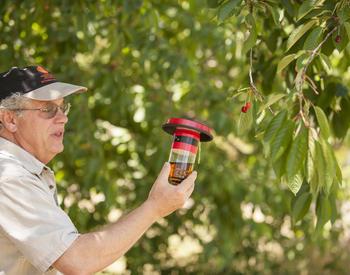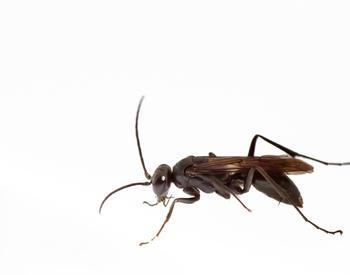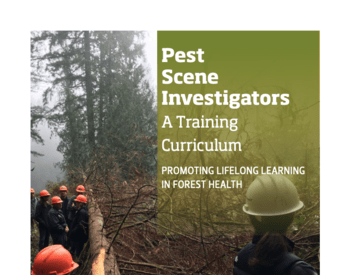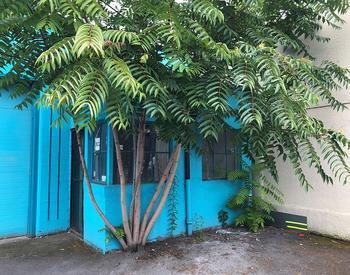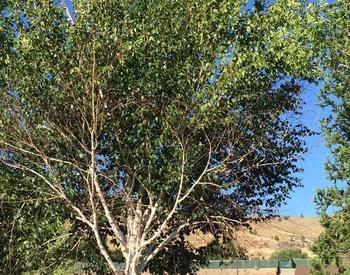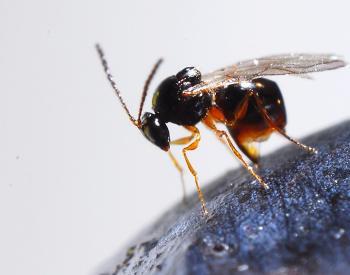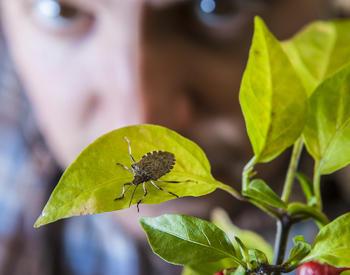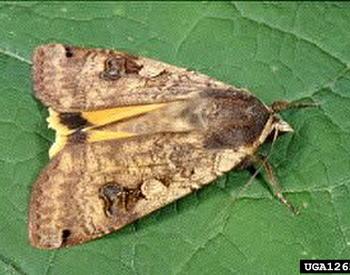When fall arrives, folks head indoors to avoid the cooler weather — and so do some of the insects normally found outside. Most of the insects prone to overwintering in structures in our region are nuisance pests — annoying to find in or on the home but not causing real damage like termites, pantry pests and clothes moths.
Many of these insects are looking for a warm, dry place to spend the winter — like people. Most of the insects listed below overwinter as adults. They go into a resting phase in the winter, active only on really warm days when they can be found on walls or rocks soaking up the warmth of the sun. In the home, the insects make more frequent appearances, resting on walls or window sills.
Stink bugs
Most stink bugs overwinter in protected areas outdoors: only a few species overwinter in structures. The rough stink bug, considered beneficial because it preys on other insects, is a native species found overwintering in homes, garages and woodsheds. The rough stink bug is similar in appearance to the invasive brown marmorated stink bug (BMSB), which causes significant crop damage and overwinters in houses more frequently than the rough stink bug.
To distinguish between the two species, check out this fact sheet or contact the Extension office. Oregon State University is tracking the spread of BMSB in order to curtail its establishment in Oregon. BSMB has the potential to severely damage some Oregon crops.
Seed bugs
Like the stink bugs, seed bugs are “true bugs,” members of the order Hemiptera (reference to their half-leathery, half-membranous wings). Seed bugs are a large group including many species, most of which feed on developing plant seeds using straw-like, piercing mouthparts.
Most seed bugs don’t cause enough damage to be of concern in the home garden, but those with multiple generations in a growing season can build up huge populations by the fall, causing alarm when they aggregate in large numbers (they have a special pheromone for that!). Seed bugs commonly overwinter in mulch, cracks and crevices, and between siding and structure. Occasionally, some make it into the home.
Boxelder bugs
Associated with the black maple (boxelder tree) and a few other deciduous trees, this insect enters homes and garages in larger numbers than other seed bugs. Like stink bugs, boxelder bugs can emit a distasteful smell if they are alarmed.
The best way to get rid of all of these intruders is a shop vacuum: there are no baits developed for them, it would be difficult to deliver chemical products into the cracks and crevices they prefer, and there are no chemical treatments appropriate for spraying all over the walls they like to rest on.
Multicolored Asian lady beetle
There are about 40 species of lady beetles native to North America, each with its own combination of red with black spots (even a couple that are black with red spots, or no spots at all). None of our native lady beetles tend to overwinter in homes: that distinction belongs to the multicolored Asian lady beetle — a species that was repeatedly released in the U.S. for about seventy years before it was understood to be outcompeting our native species. Again, the vacuum is the best defense.
Various bark beetles
For those who burn wood, storing uncured wood in the home or garage can lead to the emergence of some species of bark beetles indoors. There were several instances of both Buprestid and Cerambycid beetles emerging from firewood in our area in 2018. This happens when the beetles happen to be very close to the end of their larval (juvenile) development when the wood is cut.
The warm temperatures inside the home sometimes enable the beetle to complete metamorphosis inside the cut wood and emerge into the home. This is fairly rare: cutting the wood usually results in the death of the beetles — the timing must be just right. The beetles tend to be drawn toward lights, so they are often found on windows or ceilings near light fixtures instead of the woodpile. This can make it tough to realize where they originated.
Again, the majority of insects found overwintering in the home are just freeloaders looking for warmth, not cause for great concern. If you want more information about insects found in your home, the Extension office is usually able to identify them for you. For best results, bring more than one insect, inside a closed, clear container like a jar or prescription bottle.
